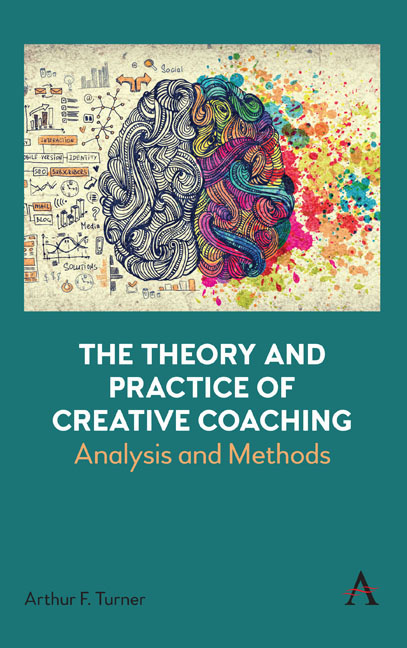Book contents
- Frontmatter
- Contents
- About the Author
- Preface
- Influences
- Introduction
- Section 1 Theory and Research
- Sections 2 and 3 Theory to Practice
- Section 2 Alternative Foci
- Section 3 Three Detailed Examples of Creativity in the Service of Executive Coaching (Walking, the Use of Finger Puppets and the Use of Music)
- Index
8 - Walking and Coaching
Published online by Cambridge University Press: 28 February 2024
- Frontmatter
- Contents
- About the Author
- Preface
- Influences
- Introduction
- Section 1 Theory and Research
- Sections 2 and 3 Theory to Practice
- Section 2 Alternative Foci
- Section 3 Three Detailed Examples of Creativity in the Service of Executive Coaching (Walking, the Use of Finger Puppets and the Use of Music)
- Index
Summary
Wanderer, there is no path – the path is made by walking
Wanderer, your footsteps are the road, and nothing more; wanderer, there is no road, the road is made by walking, by walking one makes the road, and upon glancing behind one sees the path that will never be trod again.
Antonio Machado, referred to in Jiménez-Fajardo (1985)This chapter is the first in the third part of this book which highlights in more detail key interventions in this creative field of executive coaching. This is based on many real-time workshops, coaching experiences and theoretical ideas as well as other related academic research undertaken with colleagues from 2008 to the present time. Only recently (January 2023) I worked with a client and walked along a river path and over two bridges in a South Wales City. He noticed the flow of the river and compared it to his own journey at work. The next day he reflected on the spring while going back to his office and challenges he faced differently. I am particularly grateful to my colleagues in both England and Cymru/Wales who have provided support, encouragement and ideas. Gareth Edwards, Harriet Shortt, Neil Sutherland, Catherine Latham, Ian McGregor-Brown and Pam Heneberry have played their part in my learning and appreciation of creative techniques.
Much of what is written in this chapter is partially based on my practical experience of using outdoor walking as a form of coaching. In addition, this chapter looks at the theory and practice of coaching, taking into account the use of walking. Although the recent pandemic and post-pandemic world (2020–2023) has made walking and coaching much more challenging (although I have used the technology of ‘Face-time’ to successfully walk and coach), it has not paled my enthusiasm for coaching in the outdoors by way of walking. I will also explore the theory surrounding the concepts of walking in adult learning and the traditional role it has played in human development.
In particular, this chapter looks at the contribution, both directly and indirectly, walking has made to the design of executive coaching and development
of individual leadership and personal skills based on concepts underlining coaching theory.
Walking stimulates focus and alertness in natural environments as participants move through the path of psychogeography (Bassett, 2004, Self, 2007, Bridger, 2010).
Information
- Type
- Chapter
- Information
- The Theory and Practice of Creative CoachingAnalysis and Methods, pp. 91 - 106Publisher: Anthem PressPrint publication year: 2023
